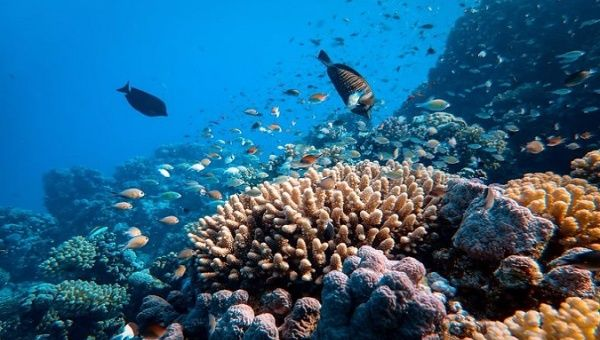
According to the Coral Reef Alliance, by 2050, global coral bleaching will have reached 90 percent. Jul. 17, 2023. | Photo: Twitter/@_RodolfoOcampo
San Juan, July 21 (RHC)-- According to reports, the coral reefs around Puerto Rico have one of the worst states of conservation of coral polyps in the Caribbean area. The island government was too late to implement a plan to protect these delicate marine ecosystems. The environmental policies focused on economic development and allowing tourists to explore the seascapes. And observers say that the problem became visible perhaps too late.
Today, the Marine Environment Society is launching an alert call again. The organization issued many reports saying that, most probably by next August, the corals that surround the island of Puerto Rico will bleach.
The report cited "a dangerous imbalance in the biosphere and constitutes, at the same time, an urgent call to contain the activities that increase the damage to the coasts." This is due to the high temperatures that the whole Caribbean is going through during this month of July. It is foreseen that by August, these temperatures will reach higher levels.
Such a situation will impact the deterioration of Puerto Rican corals, caused mainly by anthropic practices such as sedimentation, loss of water quality, damage caused by boats, impacts by divers, overfishing, and invasive species such as lionfish and macroalgae.
"We need your help! Report coral bleaching/non-bleaching observations to help NOAA Coral, Coral Reef Watch understand observed changes in the global coral reef environment.."
The Puerto Rican government does not seem to have the will to tackle the issue responsibly. So far, the authorities have not announced any clear plans to mitigate and reduce the effects of the thermal impact that the country's corals will receive in less than a month.
On the other hand, the environmental activists criticized this situation many times, but they received no official response. They made a call to the government to protect these areas and stop surfers and other types of marine activities. They claimed coastal surveillance and legal measures discouraged these practices.
It is not surprising that, without social pressure, these activities go unnoticed. To date, the Federal Emergency Management Agency (FEMA) has approved 3 million dollars for the first phase of restoration of coral reef barriers located off the coast of San Juan. Some voices are already being heard demanding that part of this fund be used to contain the threat of coral bleaching in August.
According to the Coral Reef Alliance, by 2050, global coral bleaching will have reached 90 percent. An alarming figure that reflects the seriousness of the situation. Coral bleaching occurs when corals lose their bright colors and turn white. The colors are nothing more than microscopic algae known as zooxanrels that inhabit the same corals. The damage occurs when the sea temperature increases a lot.
Jacqueline de la Cour, manager of Coral Reef Watch Operations, said that "it is difficult to predict the bleaching that the corals of the Puerto Rican coast will suffer next August." He added that "it is obvious that this is a link to the damage caused by high temperatures... at the same time, the corals are still recovering from the impact of hurricanes Irma and María." He also refers to the several reports that many species are affected by "stony coral tissue-loss disease, a rare, highly invasive, and deadly disease."

